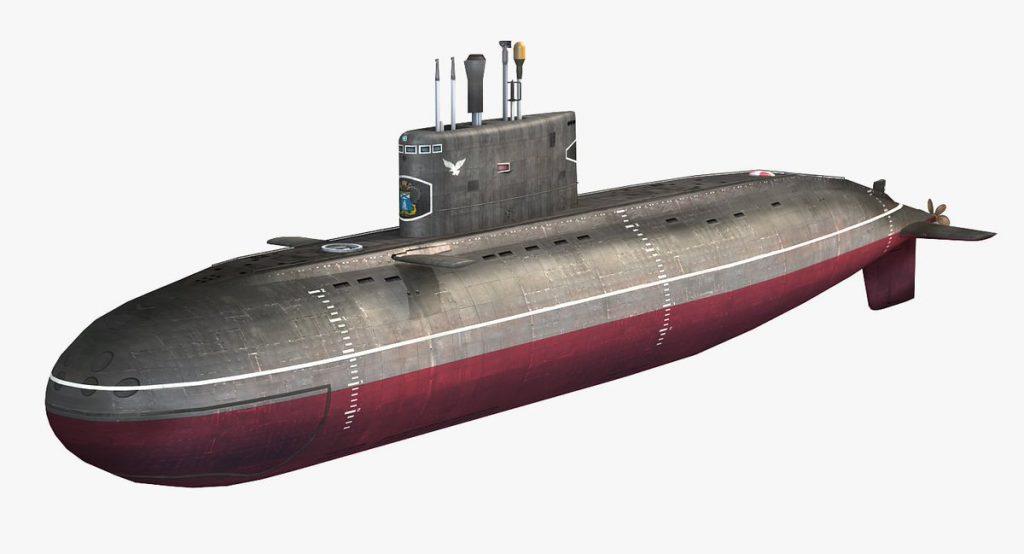
FULL NEWS ARTICLE LINK The Black Sea Fleet’s Project 636.3 diesel-electric submarine Rostov-on-Don has embarked on its deployment in distant waters and will soon join the Russian Navy’s permanent Mediterranean task force.
- ADDITIONAL NOTES: In 2017, the diesel-electric submarine Rostov-on-Don became one of two Project 636.6 submarines, along with Novorossiysk, to be awarded Russia’s new honorary military title of “shock” submarine. The Russian Defense Ministry explained that “the right to bear this title goes to submarine crews with a high level of training, demonstrated through the accomplishment of missions with Russian Naval units in the Mediterranean Sea.”
- Rostov-on-Don, or B-237, is a modernized Kilo-class attack submarine. The second of eight units commissioned as part of a series called “Project 636.6,” Rostov-on-Don boasts across-the-board iterative improvements over the original Soviet Kilo-class line.
- Rostov-on-Don is one of countless Russian weapons to cut its teeth on the Syrian Civil War, providing its crew with live combat experience while furthering Moscow’s export ambitions and geopolitical designs.
- But why would the Russians send a submarine to attack land-based encampments in Syria? There are, after all, any number of more conventional means to target a hostile base in a region where the Russian Army Force has total free reign.
- The story of Rostov-on-Don, the first Russian submarine to fire in anger since World War II, shows how the Syrian experience shaped a generation of Russian military personnel while influencing ongoing weapons research and development projects.
- Rostov-on-Don, or B-237, is a modernized Kilo-class attack submarine. The second of eight units commissioned as part of a series called “Project 636.6,” Rostov-on-Don boasts across-the-board iterative improvements over the original Soviet Kilo-class line.
- Unlike the United States Navy, which went all-in on nuclear power, Russia maintains fleets of both diesel and nuclear-powered submarines. While Russia maintains nuclear submarines for distant ocean patrols, its fleet of diesel submarines is more than adequate for conflicts in Europe, the Middle East and the Russian near abroad.
- These subs are powered by two diesel generators and an electric drive, giving them enough power to make ten knots at the surface and seventeen knots underwater. They are not fast submarines. They have a range of six thousand to 7,500 nautical miles, meaning that from the Russian Northern Fleet headquarters they can patrol for one thousand nautical miles and then go on to Cuba.
- Neither are they particularly deep divers. According to Combat Fleets of the World, the Kilo-class normally dives to just 787 feet, with a maximum diving depth of 984 feet. The submarines do particularly well in shallow water, where a pair of ducted props powered by low-speed motoring motors likely allows it to operate closer to the sea floor.
- A lot of silencing went into the Kilos. The hull is described as having the approximate shape of a drop of water and greatly reducing water resistance over older, World War II–era submarine designs. The propulsion plant is isolated on a rubber base so it doesn’t touch the hull, preventing vibrations from turning into noise that can be heard outside the boat. The ship has a rubbery anechoic coating to deaden noise emanating from the submarine, which occasionally gives the submarines a blocky appearance noticeable in photographs. The air regeneration system can keep the crew supplied with oxygen for up to 260 hours, giving the ship almost two weeks’ worth of underwater endurance.
- The sensor suite consists of the MGK-400 Rubikon (Shark Gill) low-frequency active and passive radar suite with a passive hull array. It also has a MG519 Mouse Roar high-frequency radar for target classification and mine avoidance. For simple surface navigation and search the Kilos are equipped with the MRK-50 Albatros radar.
- Finally, the Kilos have six torpedo tubes of standard 533-millimeter diameter, and were originally configured to carry homing torpedoes and eighteen SS-N-15A Starfish antisubmarine missiles. On the last ships of the class, two of the torpedo tubes are capable of firing wire-guided torpedoes. Also unique to this class is a position for a seaman with a shoulder-figured Igla man-portable air-defense missile launcher.
- The 636.3 class was an all-around upgrade. The dimensions of the submarine are essentially the same, but the bow has been reshaped to improve hydrodynamic flow. It features improved quietness due to further isolation of the machinery, moving other machinery to areas where they would make less noise. The submarine also has 25 percent greater range than previous versions. Major sonar systems, however, are largely the same as in the original Kilo-class.
- One major improvement of the 636.3 class is the ability to launch Kalibur cruise missiles. Kalibur (the export version is known as Klub) is a versatile class of missile with land-attack, antiship, and antisubmarine warfare versions. In December 2016, the Russian submarine Rostov-on-Don launched Kalibur land-attack missiles against Islamic State.




